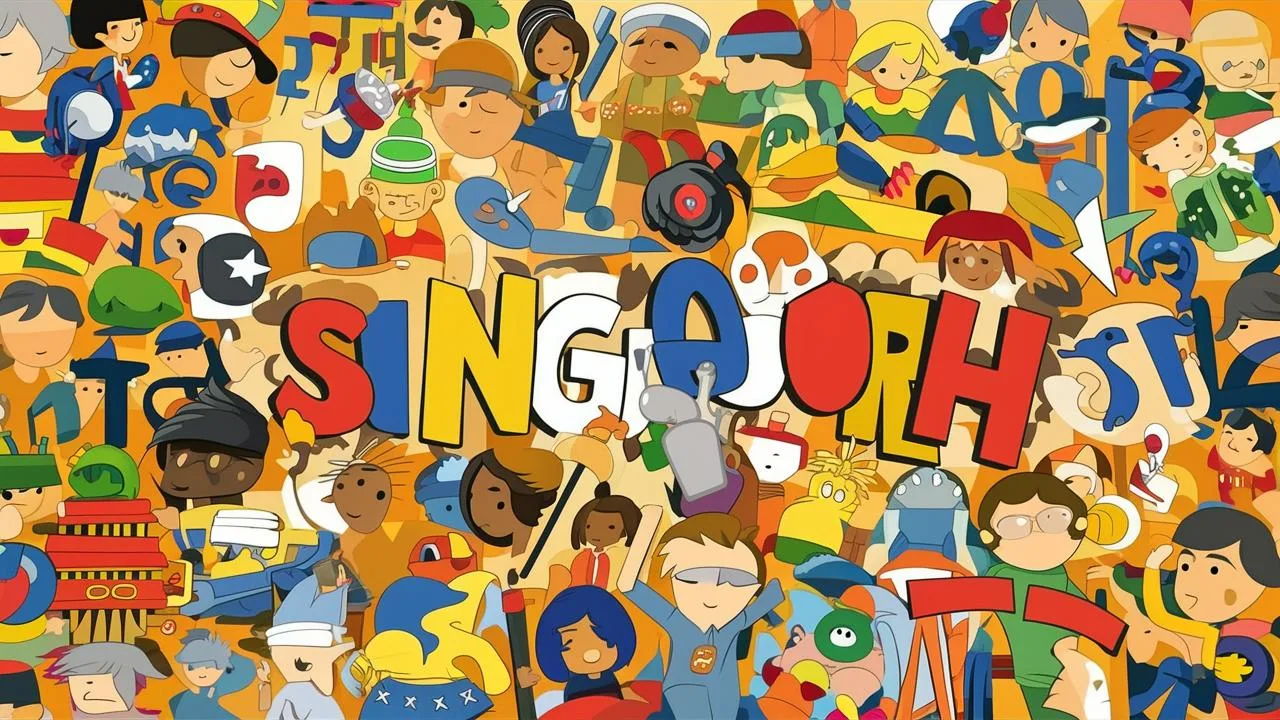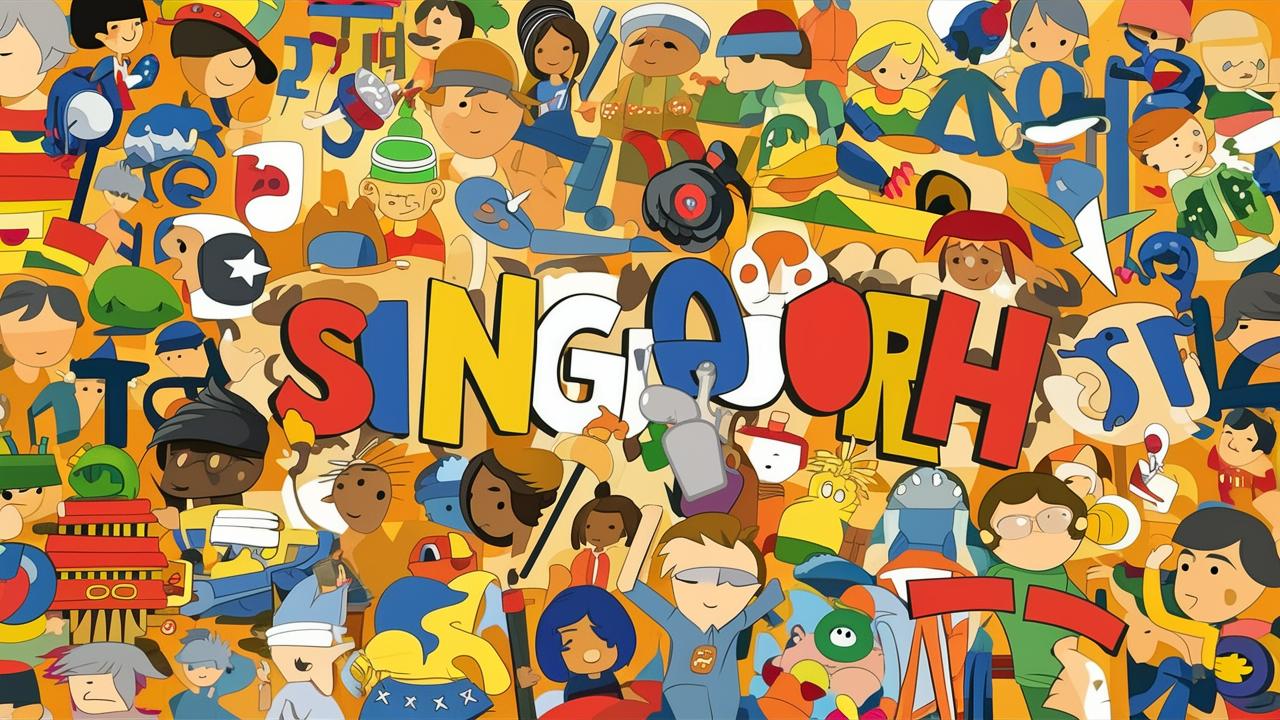how Singlish Reflects Singapore’s Multicultural Heritage
Ah,Singlish! To some,it might appear as a jumble of words and sounds,but to Singaporeans,it’s much more than that. It’s a reflection of Singapore’s multicultural heritage, where different ethnicities meet, mingle, and marry into a unique melange of culture and language. this article dives deep into the heart of Singlish and unravels how it mirrors the rich tapestry of Singaporean society. So, grab your kopi, sit back, and enjoy the ride lah!
What is Singlish?
Before diving into the cultural aspects, let’s clarify what exactly Singlish is. Singlish is a colloquial form of English spoken in Singapore. It’s a creole language that has evolved by integrating elements from different languages and dialects, including Malay, Tamil, Hokkien, Teochew, Cantonese, and Mandarin. But don’t make the mistake of thinking it’s just broken English; it’s a robust linguistic identity of its own, beloved by the locals and sometimes puzzling to those not in the no.
The Linguistic Roots of Singlish
- Malay: As the national language, Malay contributions to Singlish include words like “makan” (eat), “paiseh” (embarrassed), and “kiasu” (afraid to lose out).
- Mandarin: Words like “ang moh” (Caucasian), “lah” (expletive particle), and sentence structures often have their roots in Mandarin.
- Indian Languages: Tamil and other Indian languages have given us words like “aiyoh” (oh no) and “vedi” (temperature or fever).
- Chinese Dialects: Hokkien and Cantonese influences shine through in words like “kao peh kao bu” (complaining) and “wah lao” (expressing surprise).
The Cultural importance of Singlish
Singlish is more than just a way to communicate. It’s a cultural phenomenon, it’s the Singaporean way of life! We can’t stress enough how Singlish encapsulates the multicultural essence of this island nation. Here’s how:
Unity in Diversity
Singapore is a melting pot of cultures, and Singlish symbolizes this unity in diversity. It’s a linguistic blend that includes bits and pieces from every ethnic group in Singapore. Hence, when you speak Singlish, you are basically embodying the multicultural spirit of the island.If onyl the United Nations had a representative as effective as Singlish, eh?
An Identity Marker
Singlish acts as a badge of identity for Singaporeans. It’s how locals identify each other at international gatherings, a way to show they belong to this tiny but mighty nation. It’s the secret handshake,the inside joke shared amongst natives. Try it out when you’re across the globe – spark a conversation about chicken rice, throw in a “lah,” and see eyes light up. That’s Singlish magic for you!
Singlish in Pop culture
Singlish isn’t just restricted to casual conversations. It’s everywhere – in literature, movies, music, and even government campaigns.Take the local films for instance, characters speaking in authentic Singlish bring stories to life and echo the lived experiences of the average Singaporean.
films and Media
The iconic local film ”I Not stupid” is a classic example. The use of Singlish in the film made it resonate deeply with audiences and brought Singaporean lifestyles to the big screen worldwide. Even outsiders got a glimpse of what it’s truly like in the land of the Merlion.
Music and Literature
Musicians like the Sam Willows and authors like Gwee Li Sui incorporate Singlish in their works to add that local zest that fans crave. These works stand as cultural records encapsulating the vibrant and ever-evolving narrative of the Singaporean experience.
Singlish: Bridging the Gap
are you worried about Singlish ruining your English grammar skills? fear not! Speak it with pride. Linguistic researchers argue that speaking multiple languages or dialects enhances cognitive ability. You can thank Singlish when you find yourself speaking five languages at the speed of light.
Breaking down Barriers
Singlish plays a crucial role in breaking down ethnic barriers in Singapore, acting as a lingua franca that cuts across lines of race, age, and social class. It’s like the city-state’s secret sauce that helps foster a sense of belonging and community among its residents.
International Perception
Some purists might turn up their noses and demand “proper English,” but many see Singlish as an essential part of the social fabric. It occasionally faces policy and governmental pressures for standardization but is also recognized as an integral part of Singapore’s intangible cultural heritage.
The Future of Singlish
What does the future hold for Singlish? Well, it might not be appearing in official documents anytime soon, but it promises to stay vibrant through continuous use in everyday life, social media, and creative works.
The Balancing Act
The delicate act of balancing standard English for international interactions and Singlish for local dialogues continues. Educators and policymakers walk a fine line between nurturing a global-ready citizenry and preserving the distinctive elements of local culture.
Embracing Change
Languages evolve naturally, and Singlish is no exception. As foreign influences and technological advancements leave their mark, we can expect Singlish to adapt, morphing to maintain its relevance in the fast-paced global landscape.
Conclusion: why Singlish Matters
So, why all the fuss about Singlish? Simply put, Singlish is not just a way of speaking but a way of life.It’s a vibrant reflection of Singapore’s multicultural heritage, an embodiment of shared histories, and a bridge connecting various ethnic communities into one cohesive society.
As you navigate through Singapore’s bustling streets or savor its culinary delights, listen closely – Singlish is more than words. It’s a soul, a flavor, a legacy. so the next time someone greets you with a casual “Eh,how’s it going,lah?”,remember you’re engaging in a conversation that’s centuries in the making,extending far beyond the words spoken. No bluff, ah?


